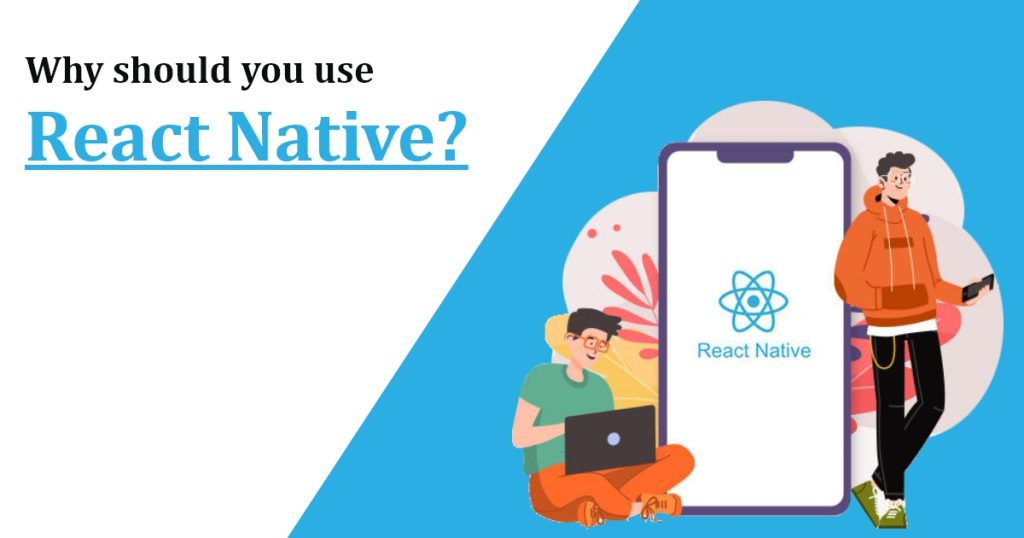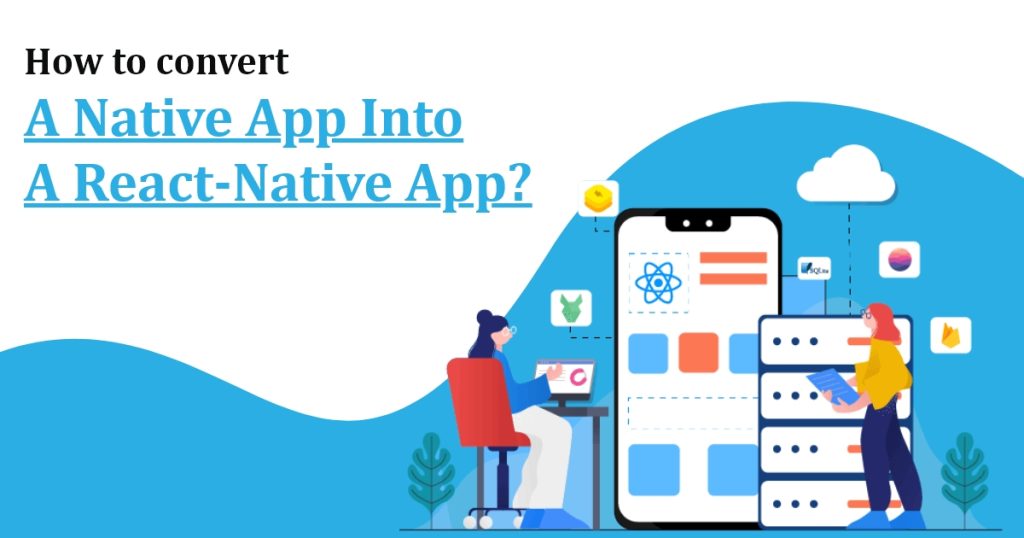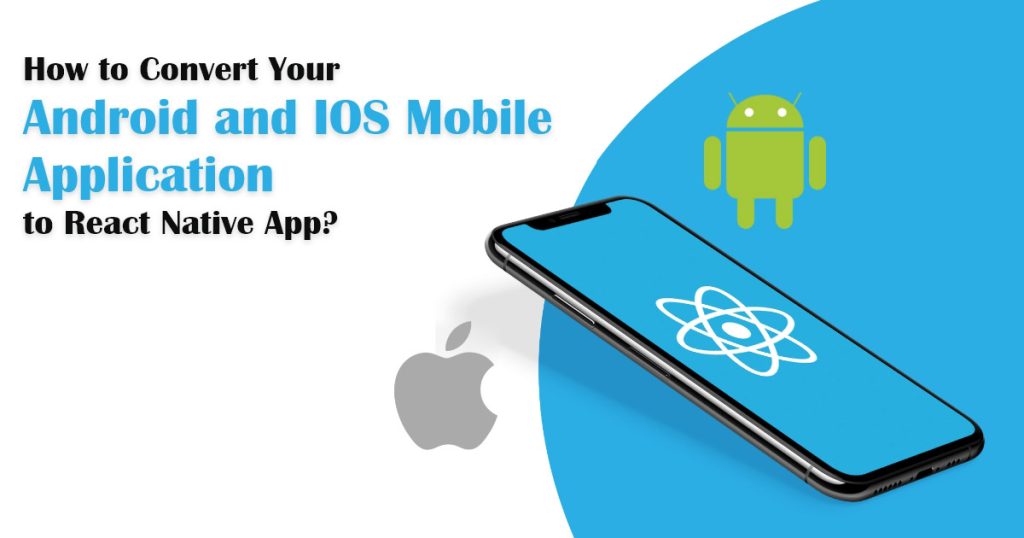Every day, React Native grows in popularity. It’s no surprise that programmers use JavaScript, but more experienced programmers also leverage its components to speed up development. While we still feel that native programming languages built into apps are more powerful. When you need an app quickly, adding React can assist.
What is React Native?
React Native is a framework for creating native applications that use React. Instead of using web components, React Native app development companies leverage native Android and iOS technologies to construct mobile UIs with declarative components. React Native functions in the same way as React does. Instead of using Virtual DOM, it manipulates the DOM using native views.
Why Should you Use React Native?

Most mobile app developers, according to an app development business, prefer to build their apps using native tools like Kotlin or Objective-C. You can convert the React Native module into a native Android app or without generating a React Native app if you already have one.
Developing apps with React Native, on the other hand, is a terrific answer in some cases. You can save a lot of time by building it in React Native for both platforms to make the same thing for Android.
Choose Native App Development If You want an App :
- Highly responsive and fully functional app
- There are no budget limits in this case.
- That works even if you don’t have access to the internet.
- That caters to a specific audience,
- That caters to a certain audience,
- Target customers prefer Android or iOS devices.
- It is expected to entail ongoing updates and improvements, as well as the addition of new features and functionalities.
- It is intended to integrate complex and rich-in-class features such as AR/VR, gaming, and other interactive elements while maintaining a pleasant user experience.
- It makes use of all of the phone’s resources as well as the features of the operating system
What Is The Difference Between Native and React-Native Apps?
Performance is always a key concern when developing cross-platform apps. Native apps have advantages such as high performance, access to new device-specific features, own development environment, consistent UI, and better store positioning, but the purpose to continue developing cross-platform apps remains unchanged:
Costs of Multiple Platform Deployment:
- Native – Native apps have a high development cost because they demand the development of different apps if you want to offer your products or services across multiple platforms.
- React native – Cross-platform, on the other hand, is somewhat less expensive to build and maintain.
App Users:
- Native – If they exclusively code for one platform, the company has a lower chance of growing.
- React native – A company receives a double benefit because it can be advertised twice, on separate platforms, and to a different group of people.
Development Time:
- Native – It takes Longer, as each platform’s code must be created from start, either for iOS or for Android App Development Services.
- React Native – Less time is needed because a single piece of code can run on various platforms.
Design Challenges:
- Native – The services supplied by the OS help in design and development.
- React Native – Developers must explicitly incorporate some platform-specific functionality application, so the design environment faces some difficulties.
Programming Expertise:
- Native – Because of the requisite skill, native developers are more expensive and more difficult to find.
- React native – Because most cross-platform technologies are web-based, it’s simple to identify cross-platform app development expertise.
Also Read – Android Apps vs Cross-Platform Apps – What are the Differences?
How to convert A Native App Into A React Native App?

JavaScript, Java, Objective-C, Objective-C ++, Python, and C ++ are used to create React Native. It serves as an umbrella option for cross-platform application development or for converting native Android or iOS applications to React Native.
Building a React Native app necessitates writing code within the framework; however, if you want to create two versions of your app for Android and iOS, you can code in React Native or consider adding a single view to your existing native app. Check out the step-by-step guide below:-
- Step 1: Choose a tool:
Choose a cross-platform mobile app development tool such as React Native, Flutter, Xamarin, RhoMobile, NativeScript, Kony Mobile Platform, Monocross, Sencha Touch, Appcelerator, FeedHenry, 5app, Titanium, Cocos2d (Cocos2d-x, Cocos2d-JS, Cocos2dXNA, Cocos2d-Swift, Cocos2d (Python)), Codename One, Unity3d, Qt, Corona IntelliJ, Visual Studio, Cocos2D, Qt, MobinCube, AppsMoment, RubyMotion, Ionic, Dropsource, Yapp, and other editors and IDEs can be used in conjunction with these cross-platform app development frameworks. Hire a Mobile App developers team, to get the best tool usage.
- Step 2: UI/ UX Design:
UI developers must follow the UI guidelines as well as address the design needs of various platforms. They should be familiar with the platform’s functional requirements.
- Step 3: Choosing Stable and reliable Cross-Platform App Modules:
Using app modules shortens development time while also providing adequate exposure to native SDKs.
- Step 4: Select API Services for Cross-Platform Mobile Apps:
Using API to deploy platform-specific mobile applications for Android, Apple, or even web works for medium-scale projects or projects with similar requirements, but may result in some glitches later on. There may be a need to tailor the API service to some platform-specific requirements.
- Step 5: Take Advantage of the Benefits of Multiple Platforms:
Cross-platform app development includes the ability to code for different screen sizes, device attributes, and certain platform-specific attributes such as screen sizes, navigation metaphors, keyboards, touch, and gestures, push notifications; device-specific features such as camera, geolocation, and maps, accelerometer, gyroscope, compass, Twitter, Facebook (NFC).
Also Read – Top Most Popular Cross-Platform Mobile App Development Frameworks!
- Step 6: App Store Approval and Testing:
Testing is the final and most important step in cross-platform app development. The apps must always be submitted for approval with a reasonable amount of time to spare before the “targeted” launch date. This process may not be entirely transparent, and the developer may be subjected to both positive and negative feedback. Top mobile application development agency in Los Angeles to control the quality of the application, a rigorous app review process must be implemented.
Also Read – Expert Tips For Choosing The Right Mobile App Development Agency in 2021.
Conclusion-
React Native components can help you save time when developing your app. If you need to quickly integrate something and construct a feature for both Android and iOS at the same time, this is the way to go. The framework is updated regularly, and the community that surrounds it is increasing by the day. React Native makes it simple to integrate Android and iOS apps.
We, ThinkStart Pvt Ltd, the Best React Native App Development Company in the USA, provide the best React mobile development services are designed to take advantage of React Native for more than just sticking to the budget. We ensure that we react native mobile app development provides you with quality, proper communication, transparency, and human relations, all while remaining cost-effective.





























